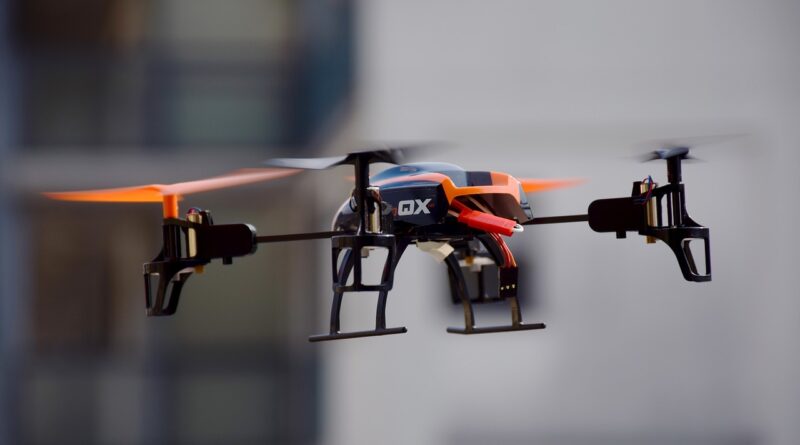Invention of Advance Technology
How Breakthrough Innovations Transform Our World
The invention of advanced technology represents humanity’s most powerful engine of progress, transforming how we live, work, and understand our world. From the wheel to artificial intelligence, each leap forward in technological capability has reshaped civilizations and opened new frontiers of possibility. Understanding how these groundbreaking innovations emerge—from initial concept to world-changing implementation—reveals not just the mechanics of invention, but the very process of human advancement itself.
The Anatomy of a Technological Breakthrough
From Concept to Reality: The Invention Lifecycle
The journey of advanced technology from theoretical possibility to practical reality follows a remarkably consistent pattern, though the pace has accelerated dramatically in the modern era.
The Spark of Insight
Every significant technological advancement begins with a fundamental insight—often seeing connections others have missed or recognizing that existing solutions no longer suffice. The invention of the transistor, for instance, emerged from the recognition that vacuum tubes were fundamentally limited in their miniaturization potential and reliability. This initial insight typically comes from deep domain expertise combined with creative thinking.
The Convergence of Enabling Technologies
Breakthroughs rarely occur in isolation. The invention of the smartphone, for example, required advancements in battery technology, touchscreen interfaces, wireless communication, and microprocessor design to converge before becoming feasible. This pattern of multiple technologies reaching maturity simultaneously often creates the conditions for revolutionary inventions.
The Prototyping and Iteration Phase
Transforming an idea into working technology involves extensive experimentation and refinement. James Dyson famously created over 5,000 prototypes before perfecting his bagless vacuum cleaner technology. This iterative process separates theoretical concepts from practical inventions that can withstand real-world conditions and constraints.
Historical Paradigms of Technological Invention
The Industrial Revolution: Mechanizing Human Labor
The period between 1760 and 1840 witnessed an explosion of technological inventions that fundamentally reshaped society:
The Steam Engine: James Watt’s improvements to earlier steam technology didn’t just create a more efficient engine—they powered the entire industrial transformation, enabling factories, railways, and steam ships that shrank the world.
The Power Loom: Edmund Cartwright’s invention automated textile production, dramatically increasing output while reducing costs, but also displacing skilled artisans and reshaping labor markets.
The Telegraph: Samuel Morse’s communication system collapsed information transmission time from days to seconds, creating the first instant global communication network and laying groundwork for future information technologies.
The Digital Revolution: Encoding Intelligence
The mid-20th century witnessed the invention of technologies that would process information rather than just materials:
The Transistor: Invented at Bell Labs in 1947, this tiny semiconductor device replaced bulky vacuum tubes, making modern computing possible by enabling the miniaturization of electronic circuits.
The Integrated Circuit: Jack Kilby and Robert Noyce’s independent inventions of putting multiple transistors on a single chip created the foundation for the microprocessor and the personal computing revolution.
The Internet: Initially developed as ARPANET for military and academic use, this network of networks would eventually connect humanity in ways previously unimaginable, inventing entirely new forms of communication, commerce, and community.
Modern Frontiers of Technological Invention
Artificial Intelligence and Machine Learning
The current revolution in AI represents a fundamental shift in what technology can accomplish:
From Programmed to Learning Systems: Traditional software follows explicit instructions, while modern AI systems learn patterns from data, enabling applications from medical diagnosis to autonomous vehicles that were previously impossible.
Generative AI: Technologies like large language models don’t just process information—they create new content, from writing to images to computer code, inventing new capabilities that blur the line between human and machine creativity.
Reinforcement Learning: Systems that learn through trial and error, much like humans, are inventing new strategies and solutions in complex domains like game playing, robotics, and resource management.
Biotechnology and Genetic Engineering
We’re inventing technologies that can reprogram life itself:
CRISPR-Cas9: This gene-editing technology, adapted from bacterial defense systems, enables precise modification of DNA, inventing new possibilities for treating genetic diseases, improving crops, and potentially eliminating pathogens.
mRNA Vaccines: The COVID-19 pandemic accelerated the invention and deployment of this revolutionary vaccine technology, which teaches cells to produce proteins that trigger immune responses rather than using weakened viruses.
Synthetic Biology: Scientists are inventing entirely new biological systems and organisms, creating biological factories that can produce medicines, fuels, and materials in sustainable ways.
Quantum Technologies
We’re inventing machines that operate on entirely different physical principles:
Quantum Computing: By harnessing quantum superposition and entanglement, these computers can solve certain problems exponentially faster than classical computers, potentially inventing new capabilities in drug discovery, materials science, and cryptography.
Quantum Sensing: Inventing sensors of unprecedented sensitivity using quantum effects, enabling applications from early disease detection to navigation without GPS.
Quantum Communication: Developing fundamentally secure communication methods based on quantum principles, inventing new paradigms for privacy and data protection.
The Ecosystem of Technological Invention
The Role of Research Institutions
Universities and research labs serve as engines of technological invention:
Basic Research: Investigating fundamental principles without immediate commercial application often leads to the most transformative inventions. The internet, GPS, and touchscreens all emerged from basic research.
Interdisciplinary Collaboration: The most significant modern inventions frequently occur at the boundaries between traditional disciplines, where researchers combine insights from different fields to create something entirely new.
Talent Development: Educational institutions train the next generation of inventors while providing environments where curiosity-driven research can flourish.
Corporate Innovation and R&D
Businesses play a crucial role in translating inventions into practical technologies:
Directed Research: Corporate R&D focuses on solving specific problems and creating marketable products, driving the refinement and commercialization of new technologies.
Scale and Resources: Companies can marshal the significant resources needed to develop complex technologies like semiconductor fabrication facilities or pharmaceutical clinical trials.
Market Feedback: Commercial environments provide immediate feedback on technological inventions, driving rapid iteration and improvement based on real-world use.
Government Policy and Funding
Public investment and policy shape the direction of technological invention:
Strategic Funding: Government agencies like DARPA in the United States have catalyzed inventions from the internet to autonomous vehicles by funding high-risk, high-reward research.
Regulatory Frameworks: Policies around intellectual property, safety, and ethics both constrain and enable different types of technological invention.
Grand Challenges: Government-led initiatives to solve major problems like climate change or disease often accelerate invention in specific technological domains.
The Process of Inventing Advanced Technology
Identifying Unmet Needs and Opportunities
Successful technological invention often begins with recognizing important problems that lack adequate solutions:
Pain-Driven Innovation: Identifying significant frustrations or limitations in existing technologies that create opportunities for improvement. The invention of digital photography, for instance, addressed the limitations and costs of film.
Opportunity-Driven Innovation: Recognizing new capabilities enabled by other technological advances. The smartphone emerged once sufficient computing power, battery life, and wireless connectivity became available.
Paradigm-Shifting Innovation: Inventing entirely new approaches that make previous solutions obsolete. Streaming video invention disrupted physical media, which had previously disrupted live broadcasting.
The Creative Process in Technological Invention
Contrary to popular myth, technological invention is rarely a sudden “Eureka!” moment:
Problem Immersion: Deep engagement with a specific challenge, often involving years of study and experimentation within a particular domain.
Analogous Thinking: Applying solutions from one field to problems in another. Velcro was invented after George de Mestral studied how burrs stuck to his dog’s fur.
Serendipity and Accident: Many important inventions emerged unexpectedly while researching something else. Penicillin, X-rays, and microwave ovens all resulted from accidental discoveries.
Systematic Experimentation: Methodically testing hypotheses and prototypes, learning from failures, and incrementally improving designs until a workable technology emerges.
Challenges in Advanced Technology Invention
Technical Barriers
The path from concept to working technology is fraught with obstacles:
Physical Limits: Many promising ideas confront fundamental physical constraints. Battery technology, for instance, is limited by the energy density of chemical elements.
Integration Complexity: Modern technologies often require the seamless operation of numerous subsystems, creating enormous integration challenges.
Scalability Issues: Technologies that work in laboratory settings frequently encounter difficulties when scaled to commercial production.
Economic and Commercial Hurdles
Even technically successful inventions face marketplace challenges:
Development Costs: The resources required to invent and develop advanced technologies have grown exponentially in many fields.
Market Timing: inventions can arrive too early (before supporting infrastructure exists) or too late (after alternatives have become entrenched).
Adoption Barriers: New technologies often struggle against established solutions, user habits, and existing investments in legacy systems.
Ethical and Societal Considerations
Technological invention increasingly raises profound questions:
Unintended Consequences: inventions can have impacts far beyond their intended applications, both positive and negative.
Equity and Access: Advanced technologies often initially benefit privileged groups, potentially exacerbating existing inequalities.
Existential Risks: Some technologies, like advanced AI or genetic engineering, raise concerns about catastrophic misuse or loss of control.
The Future of Technological Invention
Emerging Frontiers
Several domains show particular promise for future technological inventions:
Neurological Interfaces: Technologies that directly connect brains to computers could invent new forms of communication, treatment for neurological conditions, and enhanced cognitive capabilities.
Climate Technologies: inventions that remove carbon from the atmosphere, generate clean energy, or help societies adapt to changing climate conditions are increasingly urgent.
Space Technologies: As humanity expands into space, we’ll need to invent new technologies for transportation, habitation, and resource utilization in extraterrestrial environments.
The Changing Nature of Invention
The process of technological invention is itself evolving:
Accelerated Pace: The time between initial concept and practical implementation continues to shorten in many fields.
Democratization: Tools for invention, from 3D printers to AI-assisted design software, are becoming more accessible to individuals and small teams.
Global Collaboration: Invention is increasingly distributed across international research networks rather than concentrated in specific regions or institutions.
The Impact of Technological Invention
Transforming Industries and Economies
Advanced technology inventions create and destroy entire industries:
Creative Destruction: New technologies routinely make existing business models obsolete while creating opportunities for new enterprises.
Productivity Enhancements: inventions from the assembly line to enterprise software have dramatically increased economic output per worker.
New Business Models: Technologies like the internet and blockchain have invented entirely new ways of creating and capturing value.
Reshaping Society and Daily Life
The most profound technological inventions transform how we live:
Communication Revolution: Each advance from writing to printing to telecommunications to social media has reshaped how humans connect and share information.
Healthcare Transformation: inventions from vaccines to MRI machines to telemedicine have extended lifespans and improved quality of life.
Knowledge Accessibility: Technologies from the printing press to search engines have democratized access to information, reshaping education and intellectual life.
Becoming Part of the Invention Ecosystem
Developing an Inventive Mindset
Certain attitudes and approaches foster technological invention:
Curiosity and Questioning: Regularly challenging assumptions about what’s possible or necessary.
Persistence and Resilience: Continuing through the inevitable failures and setbacks that accompany the invention process.
Interdisciplinary Learning: Drawing insights from diverse fields to spark novel combinations and approaches.
Participating in Technological Advancement
Even without formal research roles, individuals can contribute to technological invention:
Problem Identification: Recognizing unmet needs and opportunities in daily life and work.
Idea Generation: Applying creative thinking to technological challenges within one’s domain of expertise.
Adoption and Feedback: Using new technologies and providing constructive feedback to guide their improvement.
The invention of advanced technology represents humanity’s most distinctive capability—the power to reshape our world through creativity, knowledge, and perseverance. As we stand at the threshold of potentially transformative inventions in artificial intelligence, biotechnology, and quantum computing, understanding this process becomes not just interesting, but essential. The technologies we invent in the coming decades will likely determine the future trajectory of our species and our planet, making this one of the most important and consequential human endeavors.




